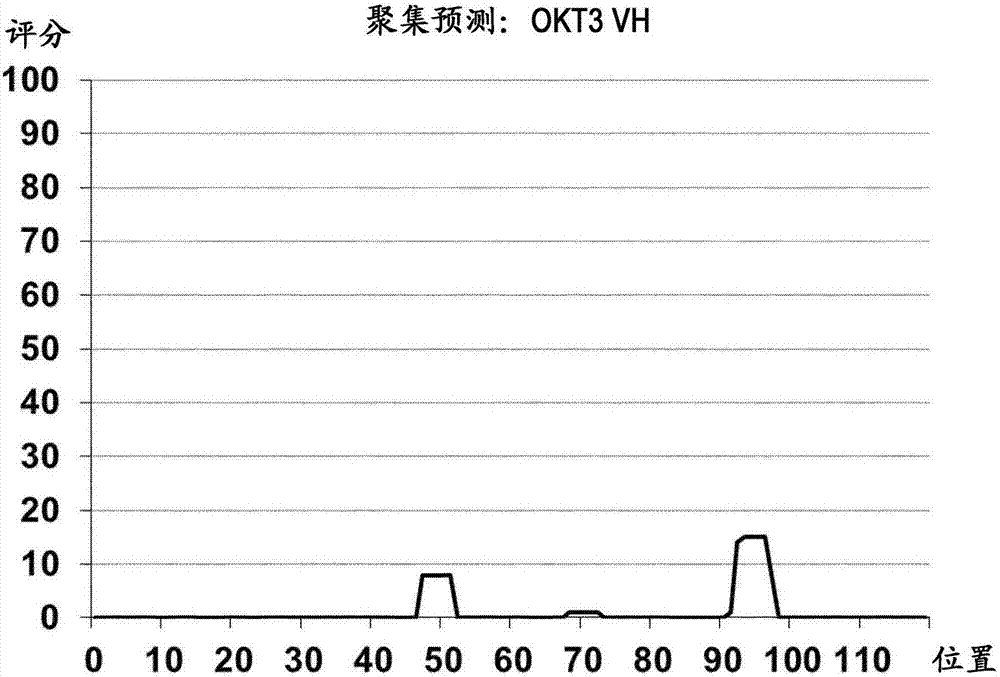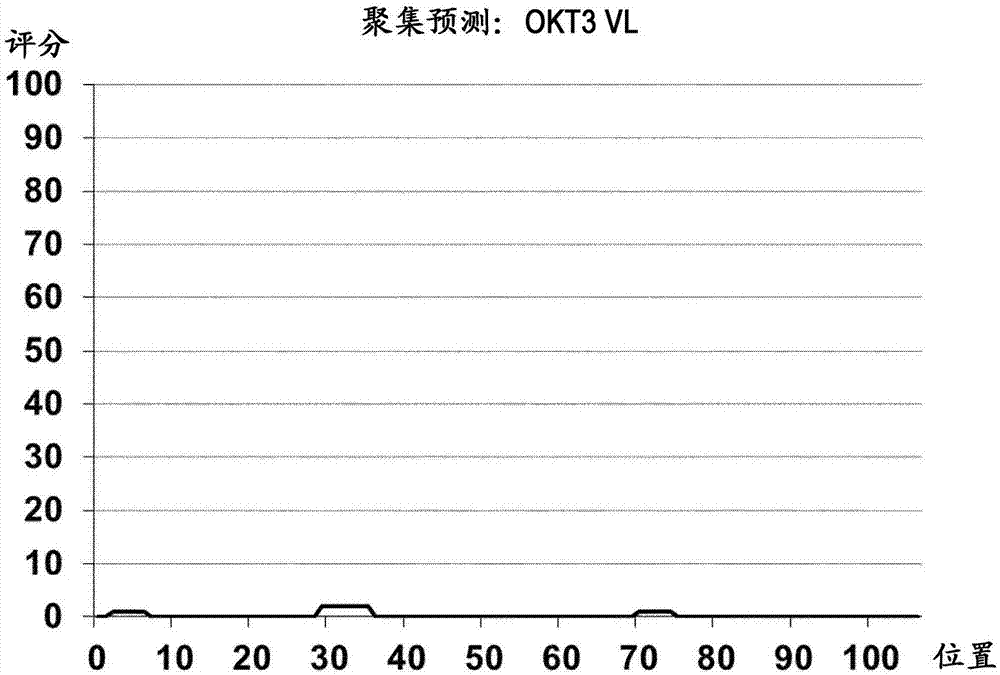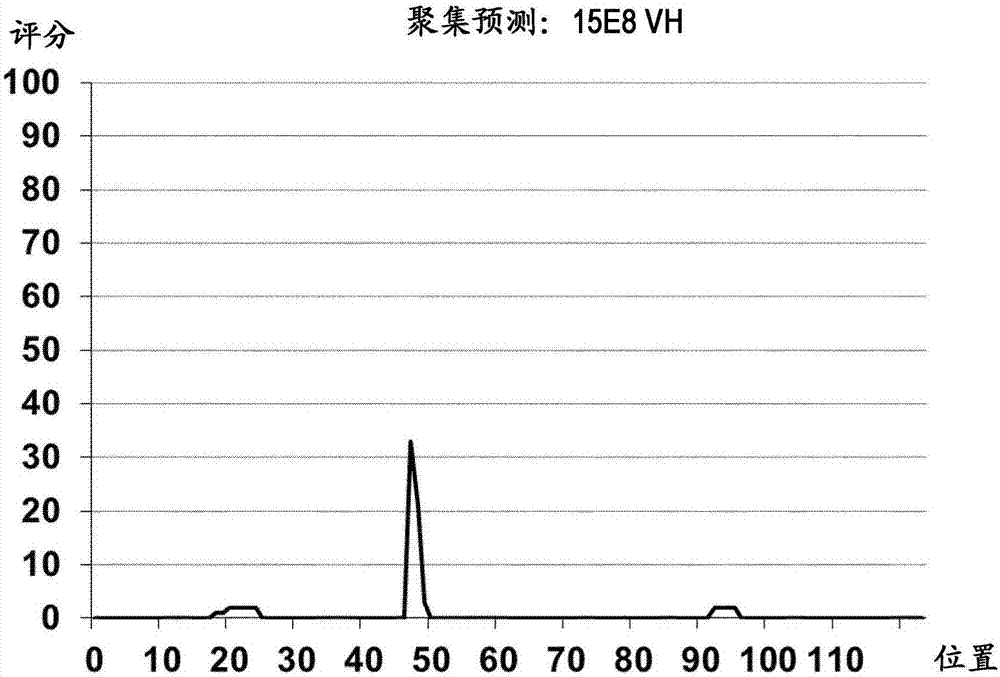Humanized antibody or fragment thereof specific for cd3
A humanized antibody and specific technology, applied in specific peptides, anti-receptor/cell surface antigen/cell surface determinant immunoglobulin, allergic diseases, etc., can solve problems such as low stability
- Summary
- Abstract
- Description
- Claims
- Application Information
AI Technical Summary
Problems solved by technology
Method used
Image
Examples
Embodiment approach
[0080] Antibodies or fragments thereof of the invention may be presented in various embodiments disclosed herein and described in detail in the preceding sections. All these embodiments of humanized antibodies or fragments thereof specific for the antigen CD3 have in common that in the humanized heavy and light chain variable domains respectively as SEQ ID NO: 1 to SEQ ID NO: 6 The presence of CDR1 to CDR6 is given in .
[0081] In one embodiment of the invention, the antibody or fragment thereof has a different CDR sequence (eg, IMGT, Chothia or Kabat CDRs) than the parental antibody clone OKT3. CDR sequences that differ from the murine parental antibody clone include amino acid changes, for example, substitutions of 1 or 2 amino acids in the case of CDRs of 3-4 amino acids in length, or 1, 2 in the case of CDRs of 5-7 amino acids in length. A substitution of 2, 3 or 4 amino acids, or where the length of the CDR is 10 amino acids or greater, a substitution of 1, 2, 3, 4, 5, ...
Embodiment 1
[0098] Example 1: In silico aggregation analysis of parental murine antibodies OT3 and 15E8.
[0099] The amino acid sequences of the heavy and light chain variable domains of anti-CD3 antibody clone OKT3 and anti-CD28 antibody clone 15E8 were analyzed using algorithms known in the art to predict aggregation-prone sequence regions. Such regions are known to interfere with recombinant expression of proteins, which results in low protein expression levels. Useful algorithms include, for example, PASTA (Walsh et al. (2014) Nucleic Acids Res. 42, W301-307), WALTZ (Maurer-Stroh et al. (2010) Nature Methods 7, 237-242) and AGGRESACN (Conchillo-Sole et al. (2007) ) BMC Bioinformatics 8, 65-81). Algorithms typically assign a numerical score to each amino acid, where the score is an indicator of aggregation potential. Figure 1 shows the heavy chain variable domain (SEQ ID NO: 13, Figure 1A ) and light chain variable domain (SEQ ID NO: 14, Figure 1B ) and the heavy chain variabl...
Embodiment 2
[0100] Example 2: Humanization of anti-CD28 antibody clone 15E8 by CDR grafting into human germline framework sequences.
[0101] Numbering of CDRs and amino acid residues according to IMGT nomenclature was determined by submitting the heavy and light chain sequences of the parental murine anti-CD28 antibody clone 15E8 to the IMGT "DomainGapAlign" tool. The resulting numbering plan and CDRs are defined as Figure 2A and Figure 2B shown in , and the CDRs are also described in SEQ ID NO:7 to SEQ ID NO:12. In the next step, the amino acid sequences of the light and heavy chains of the parental murine anti-CD28 antibody clone 15E8 were compared to a reference database of human germline V regions (polypeptide sequences). The current version (August 2014) of the IMGT Human IG benchmark catalog set was used as the reference database. These sequences include FR1, CDR1, FR2, CDR2 and FR3, but not CDR3 and FR4. The CDR3 of the heavy chain is mainly assembled from a small part of t...
PUM
| Property | Measurement | Unit |
|---|---|---|
| size | aaaaa | aaaaa |
| size | aaaaa | aaaaa |
| size | aaaaa | aaaaa |
Abstract
Description
Claims
Application Information
 Login to View More
Login to View More - R&D
- Intellectual Property
- Life Sciences
- Materials
- Tech Scout
- Unparalleled Data Quality
- Higher Quality Content
- 60% Fewer Hallucinations
Browse by: Latest US Patents, China's latest patents, Technical Efficacy Thesaurus, Application Domain, Technology Topic, Popular Technical Reports.
© 2025 PatSnap. All rights reserved.Legal|Privacy policy|Modern Slavery Act Transparency Statement|Sitemap|About US| Contact US: help@patsnap.com



